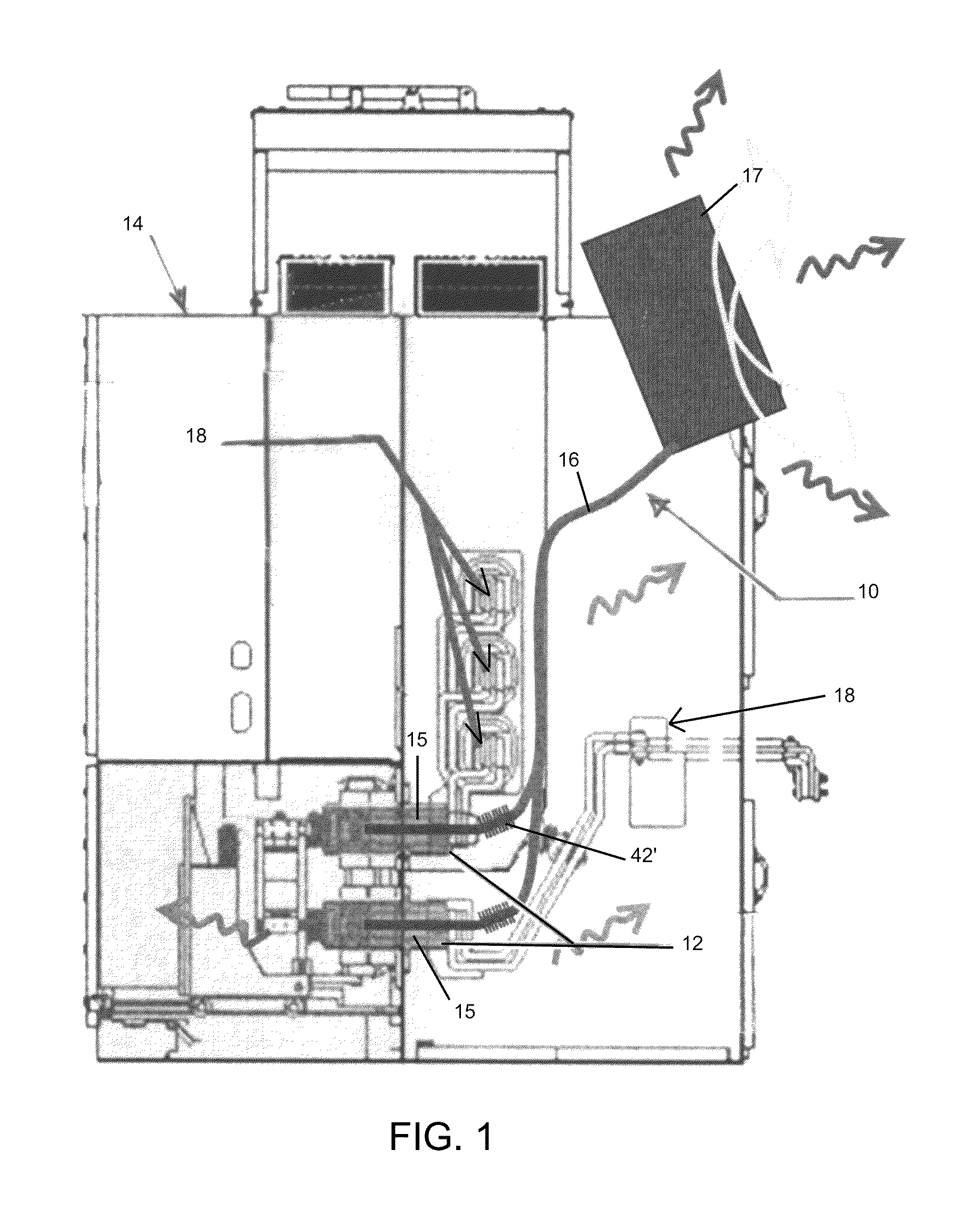Cooling apparatus for switchgear with enhanced busbar joint cooling
a cooling apparatus and switchgear technology, applied in the field of switchgear circuit breakers, can solve the problems of overly difficult to dissipate heat losses caused by the nominal current inside the switchgear compartment, inefficient heat transfer process, and the typical thermal limitation of the switchgear product by its nominal curren
- Summary
- Abstract
- Description
- Claims
- Application Information
AI Technical Summary
Benefits of technology
Problems solved by technology
Method used
Image
Examples
Embodiment Construction
[0017]With reference to FIG. 1, a cooling apparatus in the form of a heat pipe system, generally indicated at 10, is shown as disclosed in commonly owned, co-pending U.S. patent application entitled, “Switchgear Having Evaporative Cooling Apparatus”, Ser. No. 13 / 444,888 the content of which is hereby incorporated by reference into this specification. The heat pipe system 10 is used to efficiently cool the primary contacts 12 without breaching the safety requirements for the self-contained compartments of the switchgear 14. The system 10 includes an evaporator 15 associated with each primary contact 12 and a heat pipe structure 16 coupled between the evaporators 15 and a condenser 17. The condenser 17 is located at a higher elevation than the evaporator 15. Heat of the primary contacts 12 causes working fluid in the evaporator 15 to evaporate and the vapor is directed to the condenser 17. Due to heat exchange with ambient air, the condenser 17 condenses the vapor back to liquid and t...
PUM
 Login to View More
Login to View More Abstract
Description
Claims
Application Information
 Login to View More
Login to View More - R&D
- Intellectual Property
- Life Sciences
- Materials
- Tech Scout
- Unparalleled Data Quality
- Higher Quality Content
- 60% Fewer Hallucinations
Browse by: Latest US Patents, China's latest patents, Technical Efficacy Thesaurus, Application Domain, Technology Topic, Popular Technical Reports.
© 2025 PatSnap. All rights reserved.Legal|Privacy policy|Modern Slavery Act Transparency Statement|Sitemap|About US| Contact US: help@patsnap.com



